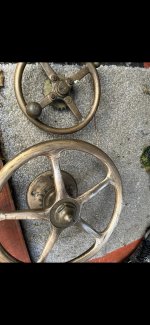Once upon a time we added oil to our gas tanks for 2 stroke engines. Somewhere along the line they went to oil injection. Seems like a lot of extra parts and complication. There must be some benefits over the simplicity of mixing oil in the tank . What's the story on this?
Thanks
will expand upon all the other reasons above
once upon a time, SAE 30 was the oil that was mixed with gasoline for 2-cycle motors. high ash content and expanded use meant that the exhaust fumes needed to be cleaned up. the oil slowly evolved to todays synthetic
the poor mixing practices of the user of yore meant that if too much oil was used, the exhaust emissions was more harmful, there was more smoke and the exhaust would drip oil sludge and the plugs would foul and the general population got mad. if too little oil was used, the motor would suffer a lack of oil breakdown and the motor owner would blame the motor manufacturer for the failure vs realizing they are too stupid to do math and add proper oil.
additionally, mopeds, motorcyles, etc. were two stroke, and to properly mix 0.34 gallons of fuel while stopping for gas on a small trip meant you were guaranteed to mix the fuel improperly
so along come a bunch of engine builders that added oil injection to things like automobiles, snowmobiles, motorcycles and mopeds in the late 60s and early 70's. that $5 extra in parts meant proper oiling if you put in 0.1 gallons of fuel or 100 gallons of fuel.
testing showed that at idle, 100:1 or 75:1 or 200:1 was all that was needed to keep the motor happy and not have sludge build-up in the exhaust. This meant the newer 2-strokes could be more emission friendly with proper oil ratio for the loading at hand
so now these same boat owners that own 2-stroke motors that have oil injection want it on their boat motors and beg and plead....
now any 2-stroke (except small engines) has a little oil injection pump. the user is happy, the emissions folks are happy, the motor is happy.
weed whackers and chain saws and other small engines are filled from a 1 gallon or 2 gallon can, so those engines have better control on the oil mix ratio and are slowly becoming less prevelant, so there is no benefit from auto-mixing and these motors are in a price-competitive market, where $2 buys brand loyalty.




















